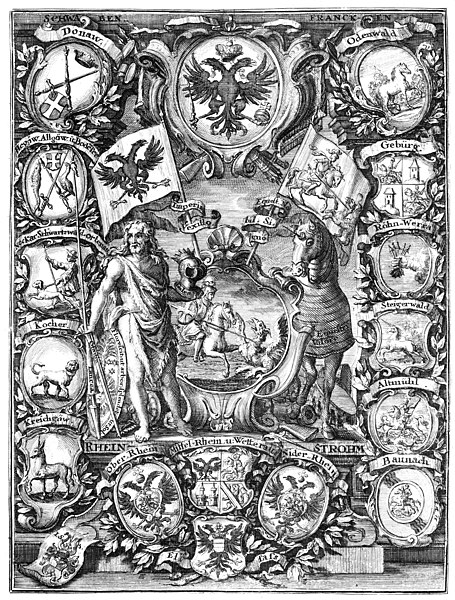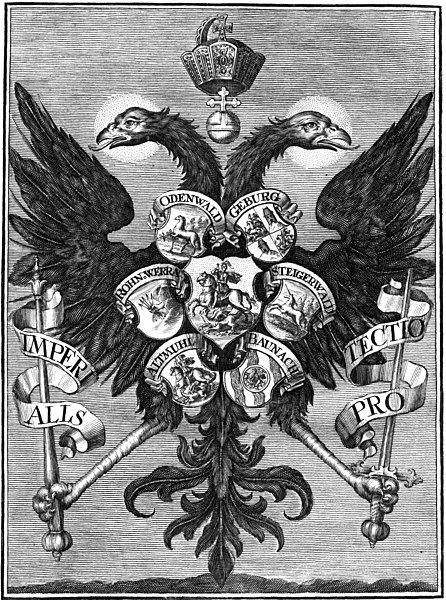House of Fürstenberg (Westphalia)
The House of Fürstenberg is the name of a German noble family of Westphalia, which descended from Hermannus de Vorstenberg. He was a liegeman of the Archbishop of Cologne, who was among the prince electors of the Holy Roman Empire. Hermannus held a castle for his lord called Fürstenberg at Ense-Höingen in Soest; this castle would give the family its name. His son was Wilhelm von Vorstenberg, the Justiciar and Castellan of Werl.
Original coat of arms of the family
The Free Imperial Knights were free nobles of the Holy Roman Empire, whose direct overlord was the Emperor. They were the remnants of the medieval free nobility (edelfrei) and the ministeriales. What distinguished them from other knights, who were vassals of a higher lord, was that they had been granted Imperial immediacy, and as such were the equals in most respects to the other individuals or entities, such as the secular and ecclesiastical territorial rulers of the Empire and the free imperial cities, that also enjoyed Imperial immediacy. However, unlike all of those, the Imperial knights did not possess the status of Estates (Stände) of the Empire, and therefore were not represented, individually or collectively, in the Imperial Diet. They tended to define their responsibilities to the Empire in terms of feudalized obligations to the Emperor, including personal service and strictly voluntary financial offerings paid to the Emperor himself.

15 Knight-cantons (Ritterorten) are represented in this print of 1721, Johann Stephan Burgermeister
Engraving depicting the Imperial Knights, 1710
Estates of Imperial Knights (Mainz)
The Franconian Circle from Des heiligen Römischen Reichs ohnmittelbahr - Freyer Ritterschafft Der Sechs Ort in Francken, 1720





